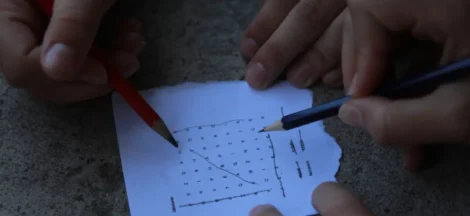Pascal’s triangle is one of the very famous triangles that follows a specific set of sequences. It is used in the representation of binomial coefficients in the form of a triangle. It was discovered by the very famous French mathematician, Blaise Pascal. The arrangement of numbers in this triangle is unique as each number in the triangle is placed in such a manner that each number is the summation of two numbers just above the number. There are many real-life applications of Pascal’s triangle. We use this unique type of triangle and its features widely in the concepts of algebra, combinations, probability theory, and so on. In this article, we will discuss the various patterns which this triangle shows along with discussing some examples related to the concept.
Various Patterns that Pascal’s Triangle Exhibit
There are a number of patterns that we can see clearly in Pascal’s triangle. These patterns were observed and brought to the notice by Blaise Pascal himself. Some of these patterns are discussed below:
- The summation of the different values of the nth row of Pascal’s triangle is. Let us take an example to understand this pattern clearly. In the 4th row of Pascal’s triangle, we have the following numbers: 1, 4, 6, 4, and 1. Now, when we summate all these numbers, we get 1 + 4 + 6 + 4 + 1 = 16 which is equivalent to which is 16.
- The other pattern that we have in Pascal’s triangle is related to the prime numbers. If in Pascal’s triangle, the second element of any given row is a prime number, then all the elements related to that particular row are divisible by that prime number. Here, we will not consider the value 1. Let us take an example to understand this pattern clearly. In the 5th row of Pascal’s triangle, we have the following numbers: 1, 5, 10, 10, 5, and 1. We can clearly see that the second element of the 5th row of Pascal’s triangle is 5 which is a prime number. Now, we can easily divide the remaining numbers which in this case is 10,10 with the prime number 5. Here, we will not take into consideration the number 1.
- We can obtain the famous Fibonacci series if we add different diagonal elements of Pascal’s triangle.
History of the Pascal’s Triangle
It is very interesting to note that the pattern of numbers used in the forming of Pascal’s triangle was known even before Blaise Pascal was born. In the 2nd Century BC, a famous Indian mathematician called Acharya Pingala started the discussion of these numbers while studying the concepts of combinatorics and binomial numbers. A famous Persian mathematician called Al- Karaji also contributed to the discovery of this unique triangle. He had written a book that contained the very first description of Pascal’s triangle. Unfortunately, this book has been lost. We can see many developments of this concept in China also. In 1655, a Treatise on Arithmetical Triangle was published in which Pascal collected several results and came to a final conclusion.
Learn Math From the Leading Live Online Class Platform
Cuemath is the leading live online math classes platform that helps students master the subject of math. Math is one of the subjects that demands conceptual clarity and rigorous practice. Teachers at Cuemath focus extensively on the base clearing of the students along with continuous practice through interesting activities like math worksheets, math puzzles, games, and a variety of other fun and interesting activities. Students learn math online and interact with teachers on a one-to-one basis which provides them with a very lively experience. Learn math from Cuemath and master the subject of math.





 Is Wooden Ring Looks More Beautiful than metal rings?
Is Wooden Ring Looks More Beautiful than metal rings?